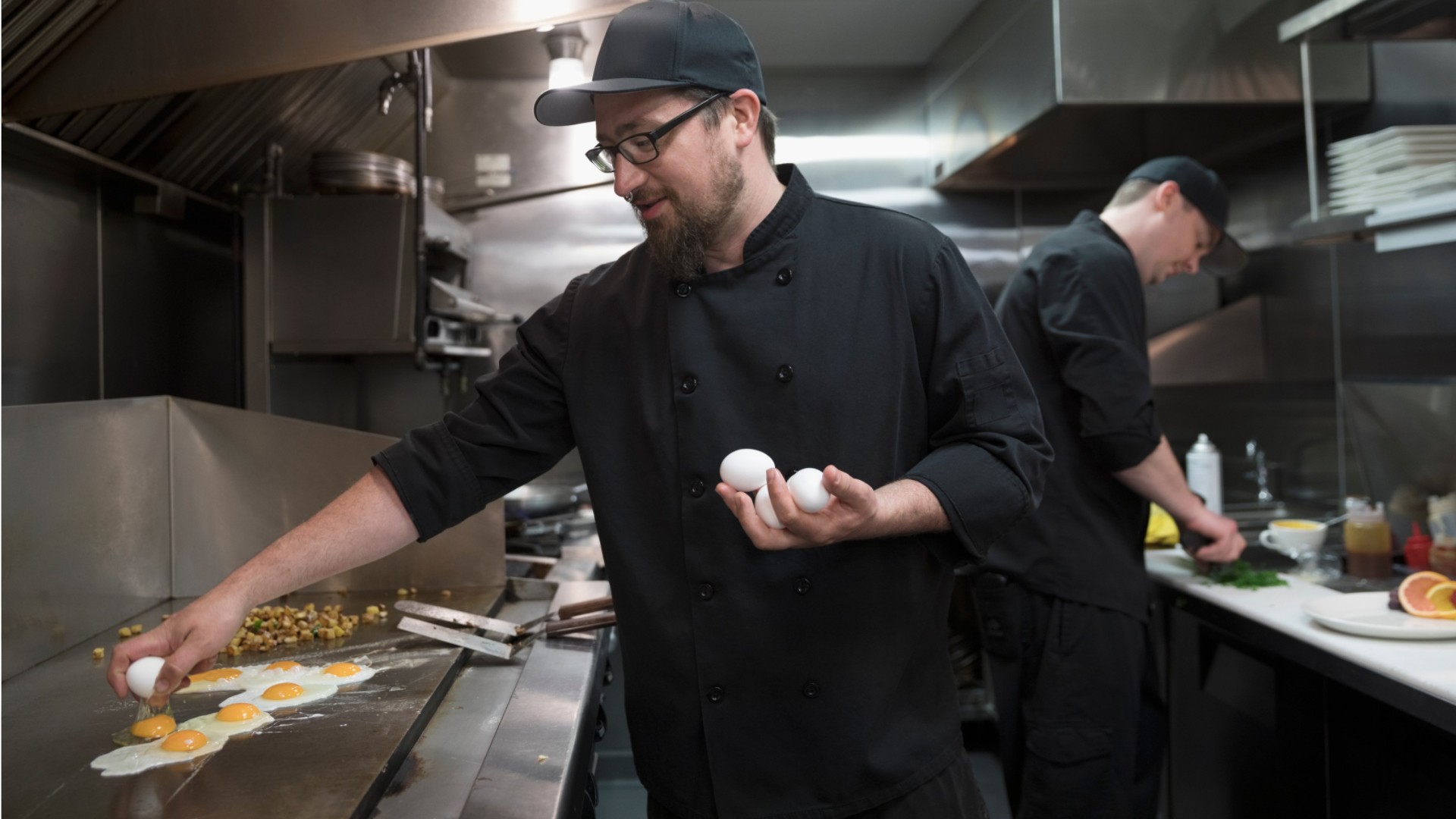Cooks, Restaurant
Cook, Grill Cook, Line Cook, Prep Cook (Preparation Cook)
 Select a military branch to see samples.
Select a military branch to see samples.
Diet Therapy; Diet Therapy Apprentice; Diet Therapy Craftsman; Diet Therapy Journeyman; Diet Therapy Manager; Services; Services Apprentice; Services Craftsman; Services Journeyman; Services Manager
Culinary Specialist; Dietitian; Food Service Technician; Medical Specialist Corps Officer; Nutrition Care Specialist
Culinary Specialist
Food Service Specialist; Marine Aide
Culinary Specialist; Culinary Specialist (Submarine); Leading Culinary Specialist; Submarine Culinary Specialist; Submarine Leading Culinary Specialist
No similar titles were found.
What they do:
Prepare, season, and cook dishes such as soups, meats, vegetables, or desserts in restaurants. May order supplies, keep records and accounts, price items on menu, or plan menu.
On the job, you would:
- Ensure food is stored and cooked at correct temperature by regulating temperature of ovens, broilers, grills, and roasters.
- Inspect and clean food preparation areas, such as equipment, work surfaces, and serving areas, to ensure safe and sanitary food-handling practices.
- Portion, arrange, and garnish food, and serve food to waiters or patrons.
Knowledge
Manufactured or Agricultural Goods
- food production
Arts and Humanities
- English language
Skills
Basic Skills
- keeping track of how well people and/or groups are doing in order to make improvements
- talking to others
Problem Solving
- noticing a problem and figuring out the best way to solve it
Abilities
Hand and Finger Use
- hold or move items with your hands
- keep your arm or hand steady
Attention
- do two or more things at the same time
- pay attention to something without being distracted
Personality
People interested in this work like activities that include practical, hands-on problems and solutions.
They do well at jobs that need:
- Attention to Detail
- Dependability
- Cooperation
- Stress Tolerance
- Perseverance
- Adaptability
Technology
You might use software like this on the job:
Spreadsheet software
- Microsoft Excel
Electronic mail software
- Microsoft Outlook
Point of sale POS software
- Point of sale POS restaurant software
Education
Education: (rated 2 of 5)
high school diploma/GED or
no high school diploma/GED
usually needed
no high school diploma/GED
usually needed
Job Outlook
Bright
New job opportunities are very likely in the future.
Explore More
You might like a career in one of these industries:
See more details at O*NET OnLine about Cooks, Restaurant.





